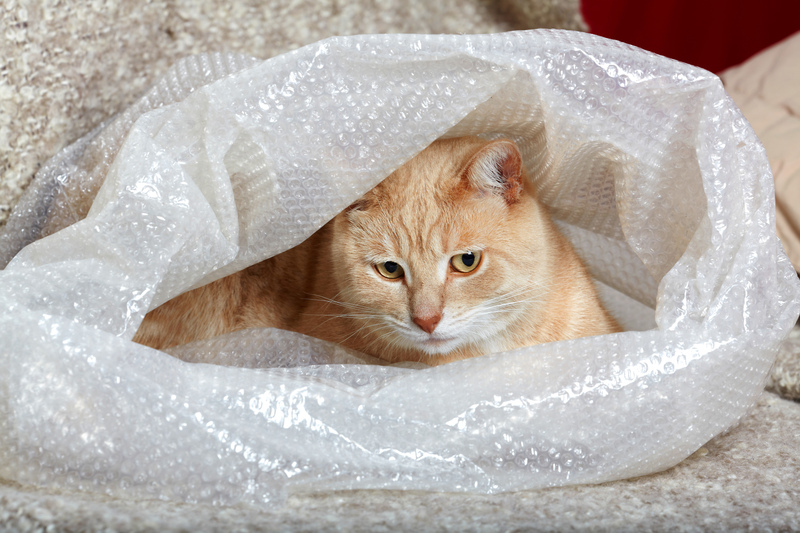Guidelines for a Smooth Bed and Mattress Move
Posted on 03/06/2025
Guidelines for a Smooth Bed and Mattress Move
Relocating is a complex process, and moving large, cumbersome furniture like beds and mattresses can add extra stress to the situation. However, with the right preparations and knowledge, transferring your bed and mattress to your new home can be a smooth, hassle-free experience. In this comprehensive guide, we'll walk you through professional guidelines for a smooth bed and mattress move. Whether you're hiring professional movers or doing it yourself, you'll find actionable advice to ensure your furniture arrives safely and remains in excellent condition.

Why Proper Bed and Mattress Moving Techniques Matter
Beds and mattresses are often the most significant and most-used pieces of furniture in our homes. Improper handling or moving can lead to:
- Damage to bed frames, slats, and hardware
- Tears, stains, or deformities in mattresses or box springs
- Personal injury during the move
- Voiding mattress warranties
Taking the time to learn guidelines for a smooth bed and mattress move not only preserves your furniture but also safeguards your health and budget.
Essential Supplies for Moving Beds and Mattresses
Before you start, it is crucial to gather the right moving supplies. Here's a list of essentials that will contribute to a seamless mattress and bed move:
- Mattress bags or covers: Protects your mattress from moisture, dust, and dirt during transit.
- Furniture blankets or moving pads: Prevents scratches and dings on both the bed frame and walls.
- Tool kit: Contains all necessary tools (e.g. screwdrivers, Allen wrenches) for dismantling your bed frame.
- Bubble wrap or foam: Provides extra padding for delicate parts like headboards and footboards.
- Ratchet straps or moving straps: Secures mattress and frame components during transport.
- Plastic bags & labels: For storing screws, bolts, and small hardware separately.
- Moving dolly: Eases transportation of heavier pieces.
Having these items on hand streamlines the packing and moving process, minimizing the risk of forgetting something important on moving day.
Step-by-Step Guidelines for Moving Your Bed and Mattress
1. Prepare Your Mattress for Moving
The mattress is vulnerable to stains, rips, and exposure to allergens. Follow these steps for safe mattress moving:
- Strip the bed: Remove all bedding, pillows, and mattress protectors. Wash and pack them separately in sealed bags or boxes.
- Clean and air out: If possible, let the mattress air out for a few hours before moving to reduce moisture and odors.
- Use a mattress bag or cover: Insert the mattress into a heavy-duty mattress bag. This is a crucial guideline for a seamless bed and mattress move to protect against dirt and water--which can damage even a high-quality mattress.
- Secure the bag: Seal the bag tightly with packing tape, ensuring every seam is covered.
2. Disassemble the Bed Frame Carefully
Proper disassembly is key for both smooth bed and mattress transportation and trouble-free reassembly at your new home. Here's how:
- Take photographs: Before disassembling anything, snap photos of each joint and connection point. This visual reference will make reassembly much easier.
- Remove bedding and mattress: Place the mattress aside in its protective bag first.
- Dismantle the frame: Using your toolkit, remove the headboard, footboard, slats, and side rails. Keep all screws, bolts, and other hardware in labeled plastic bags.
- Bundle parts carefully: Wrap each piece in moving blankets or bubble wrap to prevent scratches or chips, particularly on ornate wood or metal frames.
- Label each part: Use masking tape or labels to mark which end is which, or which side each slat goes on; this can save time and headache during reassembly.
3. Moving the Mattress: Tips and Tricks
Mattresses are awkward to handle due to their bulk and flexibility. Here are some guidelines for moving a mattress with ease and safety:
- Don't bend or fold the mattress unless it is specifically designed for folding (like a memory foam or latex mattress). Traditional spring mattresses can suffer permanent damage if folded.
- Lift with care: Mattresses are heavy and unwieldy. Always use proper lifting technique: bend your knees, keep your back straight, and lift with your legs, not your back.
- Use carrying straps or a mattress sling to distribute the weight and keep the mattress off the ground.
- Transport upright or flat: If moving in a truck or van, stand the mattress on its side against a wall (if it fits), or lay it flat on top of other furniture. Never place heavy items on top!
4. Safeguarding Your Bed Frame
The frame is just as important as the mattress in ensuring a comfortable sleep. When following best practices for bed and mattress moving:
- Bundle similar parts: Keep slats or support beams tied together for simple reassembly.
- Cover delicate surfaces: Use cardboard or foam over decorative edges to avoid scratches.
- Label structural components: This avoids confusion, especially for beds with multiple support pieces or custom hardware.
5. Loading and Transporting Your Bed and Mattress
Proper loading is key to a smooth bed relocation and mattress transport. Here's how to avoid trouble in transit:
- Load mattress last or upright: The mattress should be easy to unload and not crushed under heavier items.
- Secure bed parts: Use ratchet straps to immobilize frame pieces and avoid shifting, which can cause dents or scuffs.
- Plan the order: Arrange pieces so that unloading and reassembly in your new home is efficient.
- Cushion gaps: Fill gaps between frame pieces with pillows or blankets to reduce movement and prevent damage.
Tip: If your move involves stairs or tight hallways, measure everything beforehand to ensure all parts can make the turns. This is one of the most overlooked yet important steps for a smooth bed and mattress move!
How to Move a Bed and Mattress Without Professional Movers
Many people choose to move their beds and mattresses themselves. Here are DIY bed and mattress moving guidelines to help you succeed:
- Recruit help: Moving a heavy mattress or bulky bed frame alone risks injury--enlist at least one friend or family member.
- Protect your surroundings: Use furniture movers, door jamb protectors, and corner guards to avoid damaging walls or floors.
- Rent appropriate vehicle: A van or truck with tie-downs is ideal for transporting large bedding. Roof transport is not recommended due to safety risks.
- Work in stages: Disassemble, wrap, and load each component separately. Rushing increases the risk of damage or lost parts.
By following these steps, a safe, organized, and efficient move of your mattress and bed is within everyone's reach--no professional help required!
Special Considerations: Moving Adjustable or Specialty Beds
Certain types of beds require extra-polished care. If you have one of these, keep these *special guidelines* in mind for a completely smooth and stress-free mattress move:
Adjustable Beds
- Unplug all electrical cords and remove batteries from remotes.
- Disassemble following manufacturer instructions (often available online as PDFs).
- Handle motor components gently, packing them separately in padded boxes.
Platform, Sleigh, or Canopy Beds
- Disassemble as many pieces as possible--especially crossbeams and posts.
- Wrap each section carefully and label each part.
- Take extra photos for future reference.
Bunk Beds
- Disassemble entirely for safety.
- Group hardware for each tier in individual bags.
- Secure ladder and guardrails separately.
Post-Move Guidelines: Reassembling Your Bed and Mattress
Congratulations--you've made it to your new home! Now, it's time to reassemble your bed and prepare your mattress for first use.
- Refer to your photos: These will streamline the process and help avoid mistakes.
- Follow manufacturer's instructions: If available, keep them at hand for step-by-step reassembly, particularly for complex beds.
- Check for missing parts: Ensure all screws, bolts, and brackets are accounted for before starting.
- Inspect for damage: Look for any signs of wear, bending, or breakage that may have occurred during the move.
- Let mattress breathe: Allow your mattress a few hours to fully decompress, especially if packed tightly.
- Deep clean if needed: Wipe down the bed frame, vacuum the mattress, and replace all bedding with fresh linens for a comfortable first night's sleep.
Common Mistakes to Avoid During Bed and Mattress Moves
Even with best practices for a smooth bed and mattress move, common errors can occur. Be sure to steer clear of these:
- Not measuring doorways or hallways: Always check access points before moving large pieces to prevent getting stuck or damaging your home.
- Skipping protective covers: Even a short, unprotected trip can ruin a mattress with stains or tears.
- Improper lifting: Lifting with your back or while twisting can result in injury--always use correct technique.
- Forgetting to secure hardware: Missing screws or brackets can halt the reassembly process or leave your bed unstable.
- Stacking heavy items on mattresses: This leads to deformities and reduced lifespan of the mattress.

Frequently Asked Questions
Can all mattresses be folded for moving?
No. Only mattresses specifically designed to be folded (such as some memory foam or latex models) can be safely bent. Traditional innerspring mattresses should be kept flat or upright to prevent permanent damage.
How do I clean my mattress after a move?
Vacuum both sides, spot clean any stains, and let it air out for a few hours before putting on fresh bedding.
Is it necessary to hire professional movers for a bed and mattress relocation?
While not strictly necessary, hiring experienced movers can make moving beds and mattresses safer and more efficient, especially for large homes or complicated stairways. If you're physically able and take proper precautions, a DIY move is very achievable.
How long should I let my mattress "settle" after moving?
Give your mattress several hours to expand and air out--24 hours is ideal for memory foam products before using them again.
Conclusion: Achieve a Stress-Free Bed and Mattress Move
Moving your bed and mattress doesn't have to be a source of anxiety or frustration. With a little forethought and careful planning, following these comprehensive guidelines for a smooth bed and mattress move can ensure your favorite sleep set arrives undamaged and ready for many more restful nights. Prepare with the right supplies, handle each component with caution, and always prioritize safety--both for yourself and your furniture. Whether you're crossing town or moving across the country, these expert tips will make your transition to a new home truly seamless.
If you found this guide helpful, be sure to share it with friends or family preparing for a move, and bookmark it for future reference. Here's to a good night's sleep in your new home!



